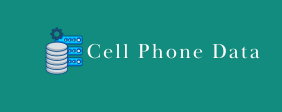Yes, I can absolutely help with logo placement Can You on websites. Your logo is a cornerstone of your brand identity, and where and how it appears on your website plays a critical role in shaping visitor perception, improving usability, and reinforcing brand recognition. Thoughtful logo placement ensures that your website looks professional, your brand message is clear, and users can easily identify your business.
Why Logo Placement Matters on a Website Can You
The logo is often the first visual element visitors notice when they land on a website. Proper placement helps to:
-
Establish Brand Identity Immediately: The logo signals who you are and sets the tone for your brand.
-
Aid Navigation: Logos often link back to the homepage, providing an intuitive way for users to navigate.
-
Create Visual Balance: The logo’s position influences the overall design flow and user experience.
-
Build Trust and Credibility: A clear, well-placed logo contributes to a polished, professional appearance.
Common Website Logo Placement Options Can You
1. Top Left Corner (Most Common)
-
This is the industry-standard placement.
-
Visitors’ eyes naturally start scanning a website from the top left.
-
It aligns with user expectations and habits.
-
Usually, the logo is clickable and links to the homepage.
Why it works: Users instantly recognize the brand logo designs service and know how to return home quickly.
2. Centered at the Top
-
Popular for minimalistic or creative websites.
-
Creates a balanced, symmetrical look.
-
Often used when the navigation menu is placed below the logo or on either side.
Why it works: It draws immediate attention to the logo and can convey a strong, focused brand presence.
3. Top Right Corner
-
Less common but used in specific design contexts.
-
Can work if the navigation or call-to-action buttons dominate the left side.
-
Sometimes used for secondary logos or partner brands.
Why it works: Can create a unique layout but might confuse users if the logo is not in an expected position.
4. Footer Placement
-
Some websites place logos in the footer the complete guide to hiring a t shirt design service for secondary branding emphasis.
-
Useful for reinforcing identity as users finish scrolling.
-
Usually smaller and less prominent.
Why it works: Complements the header logo and reminds users of the brand throughout their visit.
Design and UX Considerations for Logo Placement Can You
Consistency Across Devices
Ensure the logo placement works well on desktop, tablet, and mobile screens. Responsive design often means adjusting logo size and position for smaller screens:
-
Mobile menus may use a centered or top-left logo.
-
Logos should be large enough to be legible but not overpower the screen.
-
Keep clickable areas touch-friendly.
Logo Size and Scale
-
The logo should be prominent but balanced—not too andorra business directory large to overwhelm content or too small to be missed.
-
Maintain clear space around the logo to avoid clutter and maintain visual clarity.
-
Follow your brand guidelines for minimum size and spacing.
Clickable Logo for Easy Navigation
Users expect that clicking on the logo takes them back to the homepage. Make sure:
-
The logo is a clickable link.
-
The clickable area includes some padding for ease of use.
-
The link is implemented accessibly (keyboard and screen reader friendly).
Background and Contrast
-
The logo should stand out against the background color or image.
-
Use alternate color versions of your logo if the background changes (e.g., light logo on dark background).
-
Avoid placing logos on busy or cluttered areas that reduce legibility.
Integration with Navigation
-
The logo should complement the navigation menu.
-
For top-left logos, place navigation to the right or below.
-
For centered logos, the navigation can be split on either side or placed below.
Examples of Effective Logo Placement on Websites
-
Corporate Websites: Usually top-left logo with horizontal navigation on the right.
-
Creative Portfolios: Often center-aligned logos with minimal menus to highlight the brand.
-
E-commerce Sites: Top-left logos paired with prominent search bars and cart icons.
-
Blogs: Top-left or centered logos with clear, accessible navigation.
Technical Tips for Logo Placement on Websites
-
Use SVG files for logos to ensure crispness at all sizes and resolutions.
-
Optimize logo file sizes for fast loading without losing quality.
-
Use CSS to control logo position, size, margins, and responsive behavior.
-
Ensure your CMS or website builder settings allow easy logo placement and linking.
Additional Tips for Logo Placement Success
-
Test your logo placement with real users to see if it’s easily noticed and functional.
-
Check how your logo looks on different browsers and devices.
-
Keep your branding consistent by using the same logo version everywhere on your site.
-
Avoid overusing the logo; once in the header and footer is usually sufficient.
-
If you have a tagline, decide whether to include it near the logo or keep the logo standalone for simplicity.
Conclusion
Logo placement on your website is a small but impactful detail that affects branding, user experience, and navigation. The most common and effective placement is the top-left corner, but depending on your design goals and brand personality, centered or alternative placements can work well too. Consider factors like responsiveness, logo size, background contrast, and integration with navigation to ensure your logo shines and supports your website’s goals.
If you’d like, I can help you:
-
Analyze your current website’s logo placement and suggest improvements
-
Create mockups or wireframes showing ideal logo positions
-
Advise on responsive design strategies for logo placement
-
Help generate style guide sections for logo usage on your website
